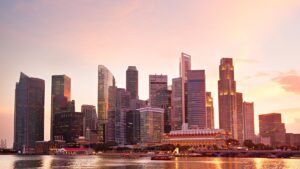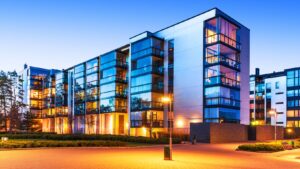Are you looking to elevate your real estate photography skills to the next level? In my experience, mastering the art of capturing stunning property images is essential in today’s competitive market. Whether you’re a seasoned photographer or just starting, investing in a real estate photography course can be a game-changer.
With practical tips and techniques tailored specifically for real estate photography, I’ll guide you through the process of creating captivating images that make properties shine. From understanding lighting and composition to mastering editing software, this course is designed to help you showcase properties in their best light.
Understanding the Fundamentals of Real Estate Photography
The Importance of Quality Images in Real Estate

As a real estate photographer, I understand the critical role that quality images play in showcasing properties effectively. In the competitive market, stunning visuals can make a property stand out and attract potential buyers. Investing in a real estate photography course is key to mastering the art of capturing appealing images that highlight the unique features of each property.
Core Principles of Real Estate Photography
In my experience, mastering the core principles of real estate photography is essential for creating compelling visuals. Understanding concepts such as lighting techniques, composition rules, and post-processing skills sets the foundation for capturing captivating property shots. A reputable real estate photography course can provide comprehensive training on these core principles, equipping you with the knowledge and skills needed to excel in this field.
Equipment Essentials for Real Estate Photography
Cameras and Lenses
When delving into the world of real estate photography, having the right cameras and lenses is vital to capture high-quality images that showcase properties effectively. I rely on a full-frame DSLR camera for its superior image quality and flexibility in various lighting conditions. Paired with a wide-angle lens, such as a 16-35mm or 10-18mm, I can capture spacious interiors and stunning exteriors with ease. These lenses help in emphasizing the size and layout of rooms, giving potential buyers a comprehensive view of the property.
Lighting and Accessories
Proper lighting is crucial in real estate photography to highlight the key features of a property and create inviting atmospheres in photos. To achieve this, I use a combination of natural light, artificial lighting, and essential accessories. Natural light is ideal for brightening up interiors, especially during daytime shoots.
Real Estate Photography Course

In a real estate photography course, you’ll delve into a comprehensive curriculum designed to enhance your skills in capturing properties effectively. The course typically covers topics such as:
- Understanding camera settings and functions specific to real estate photography.
- Learning about lighting techniques to highlight property features and create inviting visuals.
- Exploring composition rules to frame shots that showcase properties in the best light.
- Studying post-processing methods to enhance and refine property images for maximum impact.
- Practicing shooting techniques for different property types, from residential homes to commercial spaces.
Throughout the course, you’ll gain valuable insights into the intricacies of real estate photography, equipping you with the knowledge and practical skills needed to excel in this competitive field.
Key Skills and Techniques Covered
In a real estate photography course, you’ll have the opportunity to hone key skills and master essential techniques that are crucial for creating stunning property images. Some of the skills and techniques covered include:
- Camera Selection: Understanding the importance of choosing the right camera, such as a full-frame DSLR, to capture high-quality images with clarity and detail.
- Lens Choice: Exploring the benefits of using wide-angle lenses to capture spacious interiors and emphasize room dimensions effectively.
- Lighting Mastery: Learning how to utilize natural light, artificial lighting sources, and accessories like tripods to achieve optimal lighting conditions for property photos.
- Composition Principles: Mastering composition rules such as leading lines, framing, and symmetry to compose visually appealing shots that highlight property features.
- Post-Processing Techniques: Acquiring skills in post-processing software to edit and enhance property images, ensuring they are polished and professional. For photographers who want to save time or ensure the highest quality finish, using a trusted real estate photo editing service can be a smart solution to achieve consistent, market-ready visuals.
By focusing on these key skills and techniques, a real estate photography course provides a solid foundation for aspiring photographers looking to specialize in capturing properties with precision and artistry.
